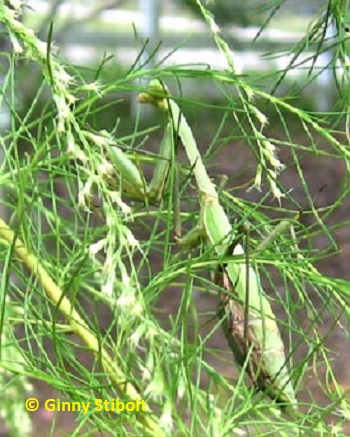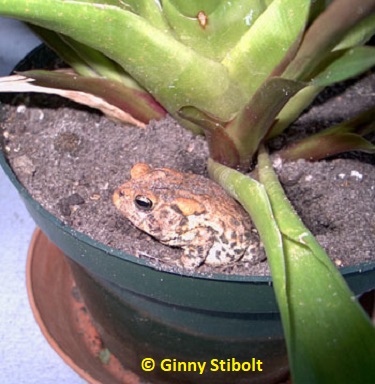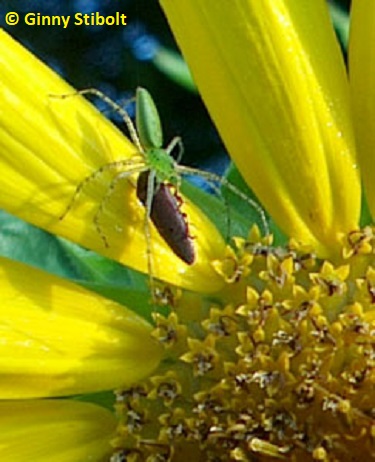Adventures of a Transplanted Gardener |
|||
Just say No to poisons
|
|||
 |
<< You really don't want to kill your wickedly beautiful garden spiders, do you? They are efficient predators and their populations wax and wane in response to prey. Mother Nature has much better methods of controlling pests than humans and their poisons.
Butterfly gardens
If you've planted a butterfly garden, they will come, but how cruel is it then to poison the butterflies and their larvae with such a system? So the first thing to do to create butterfly habitat is to stop using all pesticides. Then you provide nectar sources with a variety of flowers all season long for the adult butterflies, food for the larvae (caterpillars), shallow puddles or mud flats, and places for shelter. When you work to attract butterflies, you’ll be supporting populations of other beneficial insects because most butterfly nectar sources also attract other pollinators. Additional insect habitat in your neighborhood’s ecosystem also supports insect-eating birds, lizards, frogs, toads, and bats. In turn, they help to control garden pests. Your extension agent calls this integrated pest management, or IPM. It's all about balance.
 |
A praying mantis eats a huge number of insects in its life, but a general poison will kill this fascinating creature along with the other beneficial insects. >>
Integrated pest management (IPM)
In a balanced ecosystem, predators will be in the minority. In other words, in a natural environment, there are many more prey organisms to ensure a continuing food supply for the predators. In your landscape there are plenty of prey including, aphids, white flies, mosquitoes, cabbageworms, leaf miners, mole crickets, spider mites, and others that you'd like to get rid of.
Let's consider what happens when you attempt to poison or zap those pesky bugs that bite or damage your landscape and vegetables. A general insecticide (or bug zapper) will kill the majority of the insects in an area, but more than 90 percent of those insects are beneficial or benign. Some of those beneficial insects would have pollinated your flowers--without them you won't harvest pears from your pear tree. Your wildflowers won't be able to produce any seed. Some of those beneficials would have eaten some of your pest insects. Other predators such as bats, frogs, and birds will go elsewhere to feed, so your property becomes a poisoned vacuum.
As your landscape recovers from the poison, insects will begin to multiply again, but since you've killed off the insect predators and since the birds flew away, the harmful insects, including new pests that were previously controlled, will recover in even greater numbers than before. You spray again and the process repeats itself and each time the most damaging insects will recover in ever increasing numbers. It's time to break that cycle and manage your landscape as a complete ecosystem by using IPM.
 |
<< This toad spent the whole summer on our front porch. It's easy to create habitat for toads in your garden: place a curved potsherd in each corner of your garden spaces, especially your vegetable plot.
Encourage the beneficials and discourage the pests.
Create habitat for bluebirds, purple martins and bats on your property. Build shelters for toads in corners of your gardens. The best way to reduce a mosquito population is to make sure that water in open containers doesn't sit for three days or more and water features such as garden ponds have a population of mosquito larvae-eating fish.
There are a number of excellent advantages to this method of control:
· The predators do most of the work. You can spend your garden time doing other things.
· It helps to prevent the development of pesticide resistance in target insects.
· You are not contributing to environmental pollution.
· It's a more balanced ecosystem. A poisoned landscape requires life support from you.
· Insect predators will wax and wane in pace with pest populations.
Franchises for the mosquito system start at $125,000--Just say no! Find a greener business opportunity, like planting butterfly gardens, installing green roofs, de-lawning landscapes, building rain barrel systems, or planting rain gardens. We can all make a difference. Mother Nature will appreciate it.
Resources:
· Learn more about Integrated Pest Management at
University of Florida's IPM website: http://ipm.ifas.ufl.edu/
· The Florida Native Plant Society's website lists native plants
by county and whether they are butterfly garden plants--either nectar
or larval. www.fnps.org
· My articles on backyard habitat
and meadow management have additional
information on creating butterfly-friendly spaces.
Ginny Stibolt is a life-long gardener, a botanist, a naturalist, and a garden writer. You may contact her or read more of her articles posted on her website: www.greengardeningmatters.com.
Copyright Ginny Stibolt


